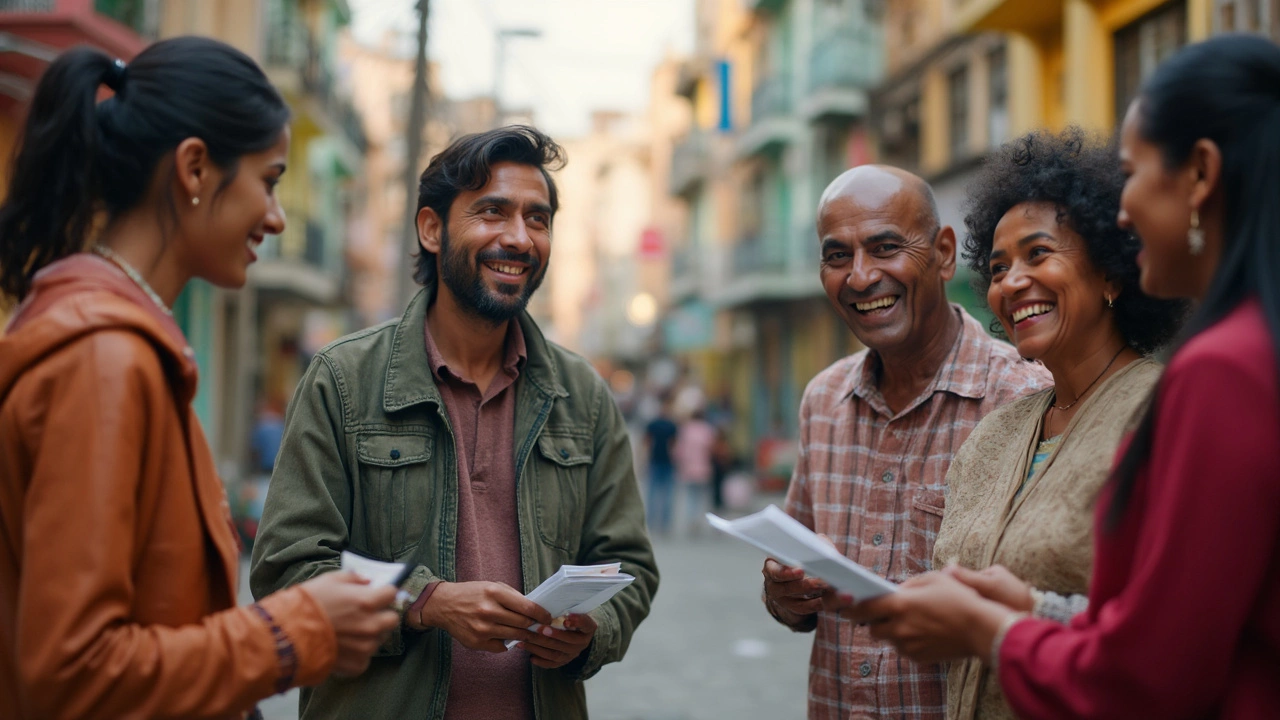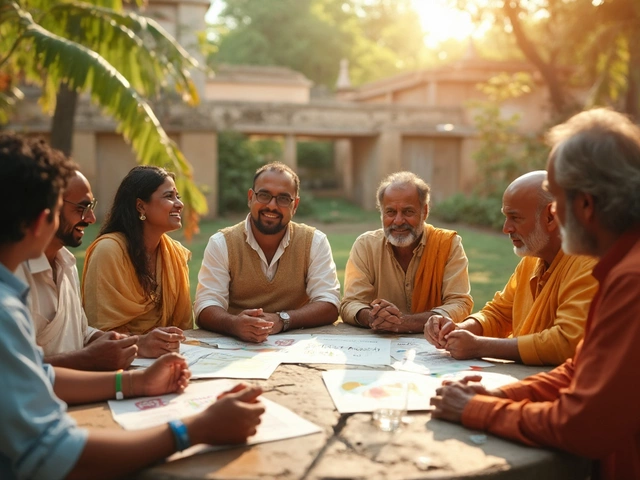If you’ve ever wondered who’s really holding your local community together behind the scenes, meet the community outreach member. These are the people quietly working after their regular jobs or in between family commitments—like ducking out of a soccer practice to check on an elderly neighbor or handing out flyers about free dental clinics in the area. You don’t always notice them, but their impact is everywhere.
They’re a bridge—connecting folks who need help with the organizations that can actually do something. Think less superhero, more the guy who knows everyone at the block party and somehow remembers who needs groceries delivered. There’s no fancy diploma required, just a willingness to get your hands dirty and a real interest in making things better for others.
If you’ve considered pitching in yourself or just want to understand how outreach programs actually make a difference, this isn’t just about handing out pamphlets. It’s about trust, real conversations, and finding answers when nobody else seems to have them. Ready to see what’s behind the title? Keep reading.
- What is a Community Outreach Member?
- Key Tasks and Responsibilities
- The Skills You Need
- Why Their Work Matters
- How to Get Involved
What is a Community Outreach Member?
A community outreach member is someone who steps up to connect people in their area with resources or support. This could be anything from helping families access free meals, to organizing events where neighbors meet health workers, to just making sure people know what services are out there. Most of the time, these members are part of a local nonprofit, school, health clinic, or even faith group, but sometimes they’re just regular folks who want to help out.
The job sounds simple at first, but there’s a lot going on. Community outreach members are the frontline—you need to know your neighborhood, spot issues early, and build trust. For example, when the pandemic hit, these were the people texting neighbors about mobile vaccine clinics or knocking on doors with information on rent help. It’s not about handing out stuff; it’s about connecting people with real solutions.
Here’s what usually falls under their daily routine:
- Talking to residents and hearing their needs.
- Sharing details about free or low-cost local services.
- Helping fill out forms or applications (think food stamps, housing, utility discounts).
- Bringing local leaders, agencies, or groups together when there’s a community problem.
- Checking on folks who live alone or have trouble getting out.
You don’t need a stack of degrees to be good at this. According to the National Association of Community Health Workers, more than 60% of outreach staff are hired from the neighborhoods they work in, because trust matters more than credentials. If you know a place inside and out, you catch things outsiders miss.
Here’s a quick look at some key stats about community outreach roles in the U.S.:
| Number of Outreach Workers (2024) | Average Annual Salary | Top Work Settings |
|---|---|---|
| ~170,000 | $40,120 | Nonprofits, Clinics, Schools, Local Government |
In short, community outreach members are the go-to folks when you’re lost about local resources or want to know what’s really happening in your area. They’re the reason so many programs actually get used by the people who need them most.
Key Tasks and Responsibilities
So what do community outreach members actually do with their time? It goes way beyond just showing up at local events or passing out flyers. Most start by listening. They talk to people, ask questions, and really try to understand what’s going on in the neighborhood. This helps them spot problems others might miss, from families going without power to new parents who don’t know about free parenting classes.
One of their big jobs is sharing information. Whether it’s about a new local clinic, a free job skills workshop, or even steps to sign up for food assistance, outreach members make sure the news gets out. Sometimes this means posting updates on community Facebook groups, other times it’s knocking on doors or setting up info tables at the farmers’ market.
Outreach isn’t all talk, though. It’s a lot of doing. Here are some things you’ll often see them handling:
- Organizing events like health fairs, neighborhood cleanups, or school supply drives.
- Connecting people to services—think housing help, free legal aid, or family counseling.
- Partnering with local schools, churches, and businesses to reach more folks and stretch resources.
- Keeping track of who needs what with simple spreadsheets or community lists, so nobody falls through the cracks.
- Following up after someone gets help, just to check if they landed on their feet or need extra support.
You’ll also see them advocating for the community’s needs. Sometimes that means talking to city officials about safer streets or pushing for more funding for youth programs. They don’t just ask once and leave—it’s about consistency.
None of this works without trust, and outreach members build that up by being reliable and available. It’s not complicated, just showing up when they say they will and actually listening to people’s needs. That’s the secret sauce that makes a community outreach member different from just another volunteer.

The Skills You Need
Being a community outreach member isn’t about having a polished resume—it’s about practical know-how and people skills. You’ll need to handle real conversations with folks who may not trust outsiders right away. If you can break the ice, listen without judging, and keep your cool even when things get heated, you’re already on the right track.
Communication is easily the most important tool in your belt. This means more than just talking; you have to listen, ask the right questions, and explain stuff clearly—sometimes in plain language, sometimes in someone’s second language. A study done by the National Community Outreach Association found that outreach workers who focus on listening first often build trust twice as fast as those who jump into problem-solving too soon.
Simple organization makes a difference too. These days, pretty much anyone can use Google Sheets or group chats. Outreach work is all about keeping names, needs, and resources straight. Miss a detail, and you might lose someone’s trust for good.
- Empathy: If you can understand what someone’s going through—even if you haven’t been there yourself—it’s a game changer.
- Reliability: Show up when you say you will. People remember this more than you’d think.
- Problem-solving: Not everything has a straight answer, so thinking on your feet is huge.
- Flexibility: Outreach rarely goes as planned. Be ready to pivot without getting flustered.
And let’s not forget, being a community outreach member often means working with people from all kinds of backgrounds. If you’re open-minded and don’t mind stepping outside your comfort zone, you’ll go further than you’d expect. You don’t need to know every solution—you just need the drive to find answers and the patience to earn trust, one conversation at a time.
Why Their Work Matters
Community outreach members might not make big headlines, but the difference they make shows up in small wins all over town. They’re the reason food banks stay stocked, people hear about free health checkups, and lonely seniors get visitors now and then. If there’s a local event, service, or support group running, chances are a community outreach member helped make it happen.
Think about it—lots of people don’t even know what services are available in their neighborhood. A 2023 Pew survey found that almost 40% of Americans weren’t aware of local housing or food resources during tough times. Outreach members step in to fix that gap. They don’t just share flyers—they walk people through the process, answer questions in plain English, and even tag along to appointments if needed.
Trust is huge. People are way more likely to ask for help or talk about what they need when they see a familiar face. Outreach folks often come from the communities they serve, so they get where people are coming from. That connection builds real trust and means the help actually fits the problem rather than being a one-size-fits-all solution from City Hall.
Take a look at the hard numbers:
| Impact Area | Results |
|---|---|
| After-school programs | Communities with outreach members saw 35% higher sign-up rates (Urban Institute, 2023). |
| Health Clinics | Outreach-driven events resulted in double the attendance for free screenings (CDC, 2022). |
| Food Access | Neighborhoods with active outreach efforts had 20% fewer households facing food insecurity (Feeding America, 2024). |
None of these wins happen by accident. Outreach members make the rounds, follow up, and stick around when the going gets tough. That’s often the difference between someone getting the help they need or falling through the cracks. Without them, a lot of everyday folks would simply miss out.

How to Get Involved
So now you’re thinking, “Alright, this sounds like something I might want to try.” Good news: getting into community outreach isn’t as complicated as landing an office job. In fact, neighborhoods usually need more hands than they have. And you don’t need a degree in social work—just a bit of real interest.
The first obvious step is to look up organizations near you that work with your interests. Public libraries, schools, food banks, clinics, faith groups—they all have outreach programs running year-round. Most of these places list volunteer opportunities on their websites, or they’ll have a sign-up sheet in person. Don’t wait for an official invitation; just ask.
Here are some straight-up ways to dive in without any head-scratching:
- Drop by your local library or community center and ask about ongoing outreach projects.
- Check out your city or town’s official website—there’s usually a section for volunteering.
- Browse Facebook groups or Nextdoor. People post about neighborhood cleanups, youth mentoring, food drives, and more.
- Many food pantries let you register online but also accept last-minute walk-ins.
Time is always the big question. How much can you commit? For most outreach roles, you pick your hours. Some folks help every weekend; others pop in on holidays or during charity events. Around 77% of U.S. volunteers say they pitch in less than 10 hours a month, which goes to show you don’t need to quit your day job to make a dent.
If you want to focus on a particular cause—like seniors, youth, or health clinics—just ask what groups already work on that and how you can help. Showing up consistently builds trust faster than just promising you’ll come back. Once people see your face and remember your name, they’ll loop you in on more ways to help.
Quick look at where outreach volunteers spend their time (source: 2024 Volunteer Impact Survey):
| Activity | Percent Participating |
|---|---|
| Food Distribution | 41% |
| Mentoring Kids/Teens | 28% |
| Community Cleanups | 19% |
| Health Awareness Events | 12% |
Want a secret? A lot of regulars started off just like you—asking their library staffer about local needs or clicking on a random volunteering post. Whether you stick to one cause or jump between events, being a community outreach member means showing up and caring. The rest? You’ll figure it out as you go.





